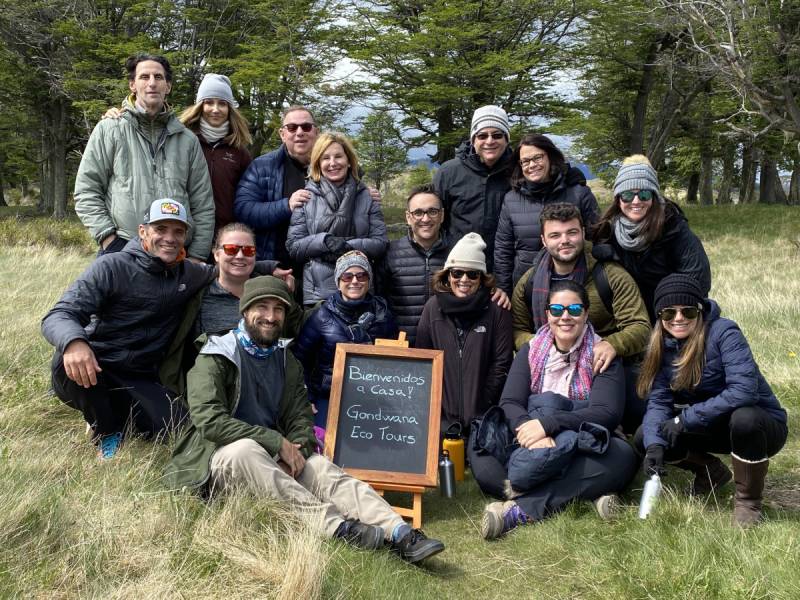Can You Experience the Aurora Borealis in Indiana?
PRIVATE & SMALL GROUP TOURS TO THE WORLD'S BEST DESTINATIONS
Are You Planning A Trip To See The Northern Lights?

Exploring the Possibility of Seeing Northern Lights in Indiana: Forecasts, Cities, and Viewing Alternatives
While Indiana offers peaceful skies and scenic countryside, it is not a reliable place to view the Northern Lights. At Gondwana Ecotours, we specialize in helping travelers experience the aurora where it truly shines—and Indiana simply doesn’t make the list of consistent viewing states. Still, during rare and powerful solar storms, parts of northern Indiana may catch a faint glimpse under perfect conditions.
Can You See the Northern Lights in Indiana?
The short answer: only rarely. Indiana sits well south of the auroral oval—the magnetic region encircling the poles where auroras are commonly visible. Sightings in Indiana are infrequent and only possible during major geomagnetic storms (KP Index 7+), which occur a few times per solar cycle. Even then, the aurora is typically too faint for the naked eye and often obscured by light pollution or cloudy weather.
Aurora Visibility in Indianapolis
It’s virtually impossible to see the Northern Lights from Indianapolis. The city’s southern location and light pollution eliminate any realistic chances, even during strong solar activity. Travelers interested in viewing auroras should not consider central Indiana a viable option.
What About Northern Indiana or South Bend?
Northern regions—like South Bend or areas near Fort Wayne—offer marginally better potential. On the rare occasion of a KP 7+ storm with clear, dark skies, extremely faint activity may appear low on the northern horizon. Locations like Indiana Dunes or rural state parks offer slightly better visibility, but still require exceptional timing and conditions.
Global Aurora Forecast Outlook (2026–2030)
We’re entering the most active phase of Solar Cycle 25—a global period of heightened solar and geomagnetic activity. This may increase aurora intensity worldwide, especially near polar regions. However, low-latitude states like Indiana will still only see auroras during extreme space weather events. Here's the global auroral activity outlook:
| Year | Global Aurora Activity | Notes |
|---|---|---|
| 2026 | ⭐⭐⭐⭐⭐ Very High | Peak of Solar Cycle 25. Most geomagnetic storms expected globally. |
| 2027 | ⭐⭐⭐⭐½ Extremely High | Continued storm activity following the solar peak. Great conditions in aurora-prone areas. |
| 2028 | ⭐⭐⭐ Moderate to High | Cycle begins declining, but strong auroras still occur in high-latitude regions. |
| 2029 | ⭐⭐ Low to Moderate | Solar activity tapers. Fewer storms. Aurora sightings decline overall. |
| 2030 | ⭐ Low | End of Solar Cycle 25. Rare activity outside of polar regions. |
Sources: NOAA, NASA, Aurora Tracks, Space.com, Andy Keen, LiveScience
Tips for Chasing Rare Auroras in Indiana
- Use real-time KP Index alerts from NOAA or apps like “My Aurora Forecast”
- Look for storm predictions at KP 7 or higher
- Travel north—away from cities—to dark sky parks or rural preserves
- Use long-exposure photography to enhance visibility of faint glows
Want a Real Chance to See the Northern Lights?
If you’re serious about experiencing the aurora borealis, Indiana will almost certainly leave you disappointed. For a guaranteed viewing adventure, head north to proven aurora hotspots:
We'll help you go beyond chance sightings and experience the full spectacle of the aurora—where the sky truly comes alive.
Download all three Alaska tour brochures for tour dates and pricing.

About Gondwana Ecotours
Gondwana Ecoutours specializes in small group and private tours to bucket list destinations around the world. Our itineraries are carefully curated to include both unique nature and culture and fun activities are suitable to most travelers. Traveling with guides who live in the communities we visit add depth and authenticity to the experience.
| See All Tours > |

